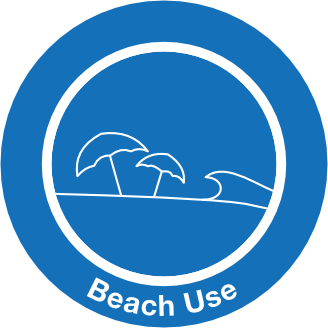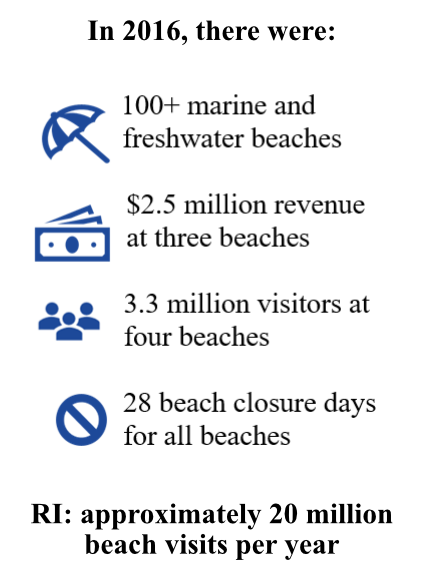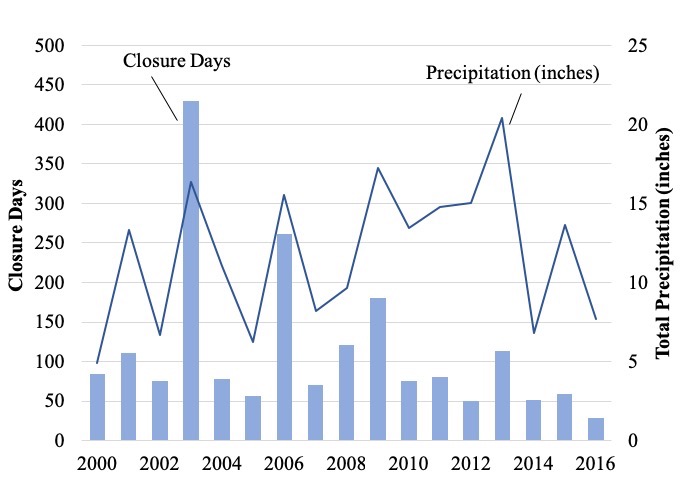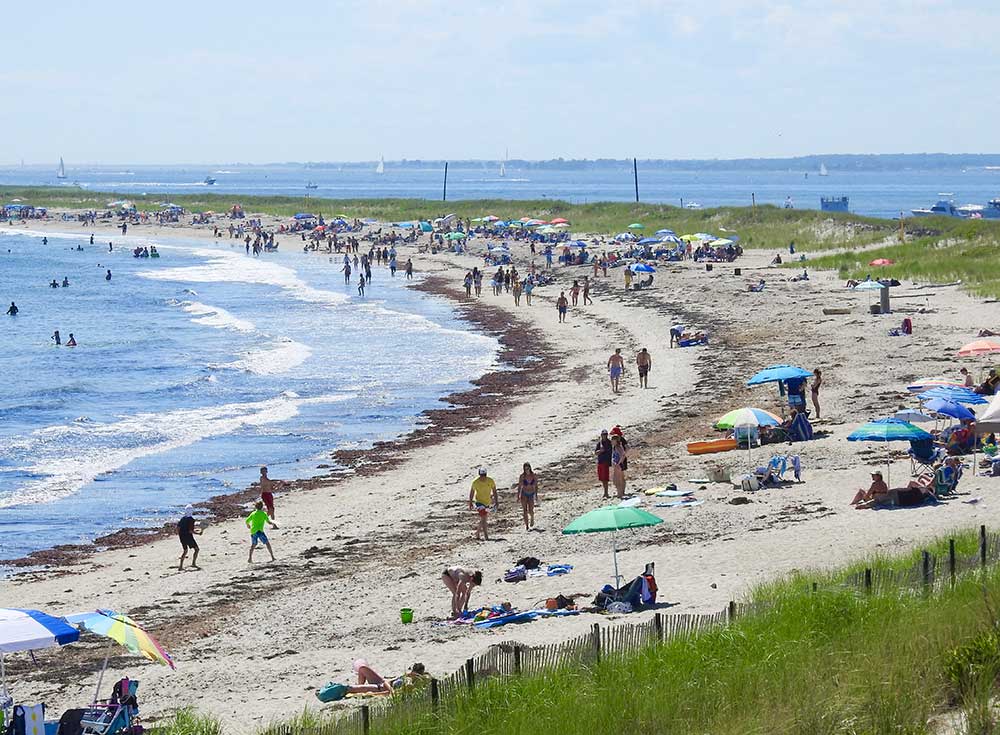

Recent Trends
- Beach attendance is growing: on average, there are 20 million visits a year to RI’s 70+ beaches, 37 of which are saltwater. Attendance has increased at many beaches – statistics available for Scarborough, Fort Adams, and Goddard Park illustrate that attendance has increased 56% from 2010 to 2015, to a total of 2.5 million visitors. For City Park, Conimicut, and Narragansett beaches, the combined visitor rate rose to 3.3 million. On average, there are 20 million beach visits to beaches in RI each year. In Bristol, Eastons, and Sachuset beaches, this visitation generated $2.5 million in revenue in 2015 from beach passes and parking fees. Although not all beaches charge for use or parking, this figure illustrates their important contribution to the economy.
- Beach closures matter: beach closures peaked in 2003 with 429 combined closure days for saltwater beaches. In 2016, the number of closures dropped to 28 days (see graph). Beach closures are typically due to levels of bacterial contamination in the water that exceed safe health standards, usually induced by precipitation carrying these pollutants from human settlements into the water – these closures can be indicative of overall water health in the Bay. Proper waste management that prevents rainfall runoff is key to preventing closures. For example, programs since 2009 to abate combined sewer overflow reduced the number of beach closure days by properly handling waste. Additionally, location matters: 63% of beach closures occurred in Warwick from 2000 to 2016, partially due to the high number of cesspools in Warwick. In recent years, the city has improved the sewer system to address this issue.
- It’s difficult to comprehensively measure the total economic impact of beach use: the revenue data above only includes direct spending on beach access, such as parking and beach passes, specifically for beaches only in RI. Visitors also contribute to the local economy through activities associated with beach use, such as dining, shopping, event rentals, and hotel stays (for more information, see “Tourism” fact sheet).

Future Outlook
In 2016, the State of Rhode Island reduced beach pass prices by roughly half to promote tourism and increase beach accessibility. Although visitation rates may increase in the future, NBW beaches remain under threat from bacterial contamination, which is exacerbated by the effects of human development and climate change. The beaches are already vulnerable: currently 14 of the 37 saltwater beaches in the area are considered of “high concern” (1.5+ closures a year) for water contamination. Future predictions of precipitation increases and warmer water temperatures, as well as continuing influxes of human population, may elevate risks of ocean water contamination. Furthermore, sea level is forecasted to rise nearly ten feet by 2100, submerging many beaches or rendering them inaccessible. Action to preserve water quality and the overall maintenance of these beaches is imperative to ensure their continuing contribution to the watershed’s economy.
Read the full beach use chapter

